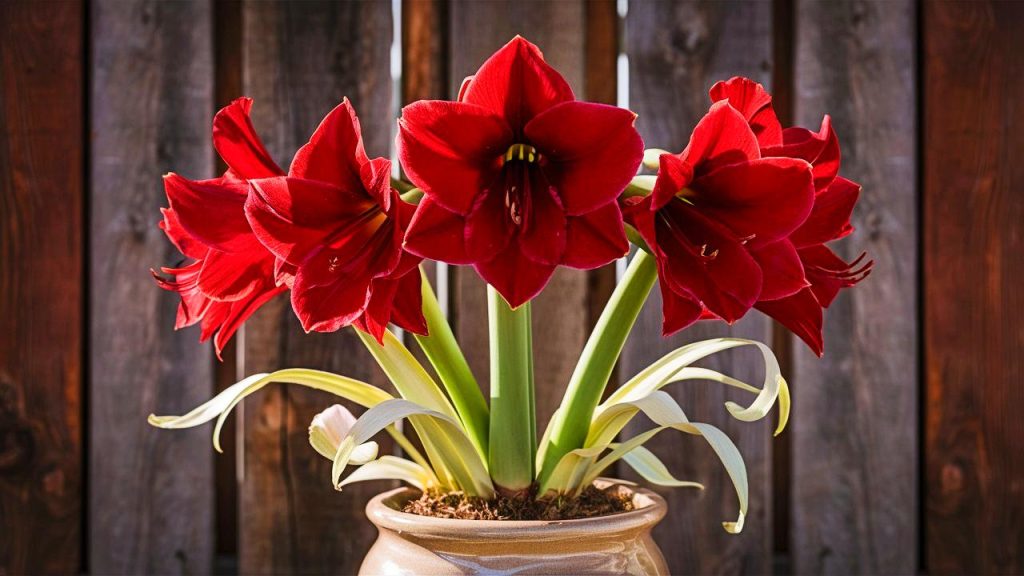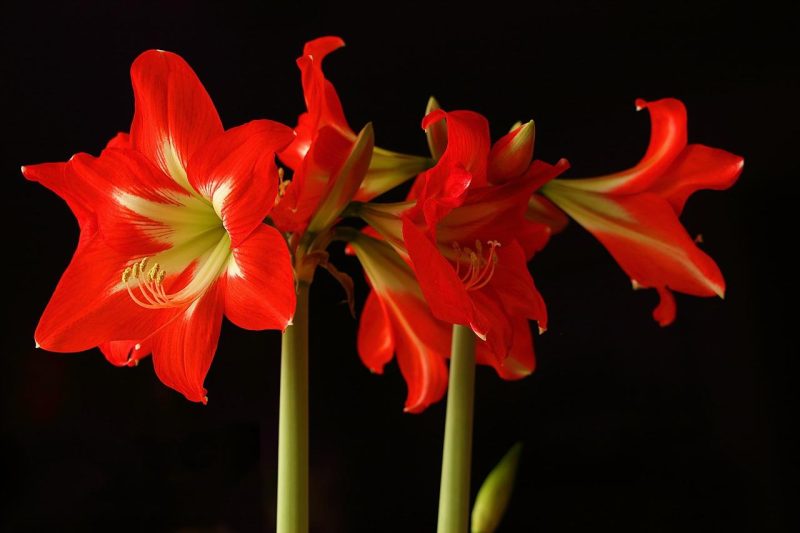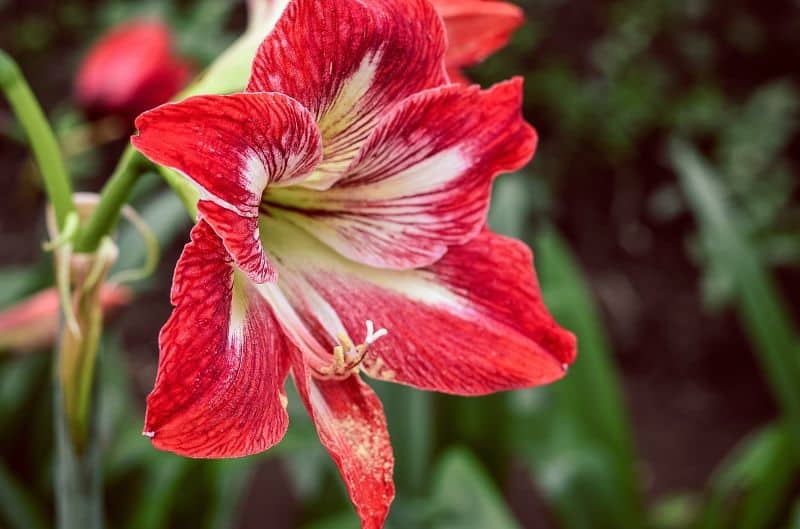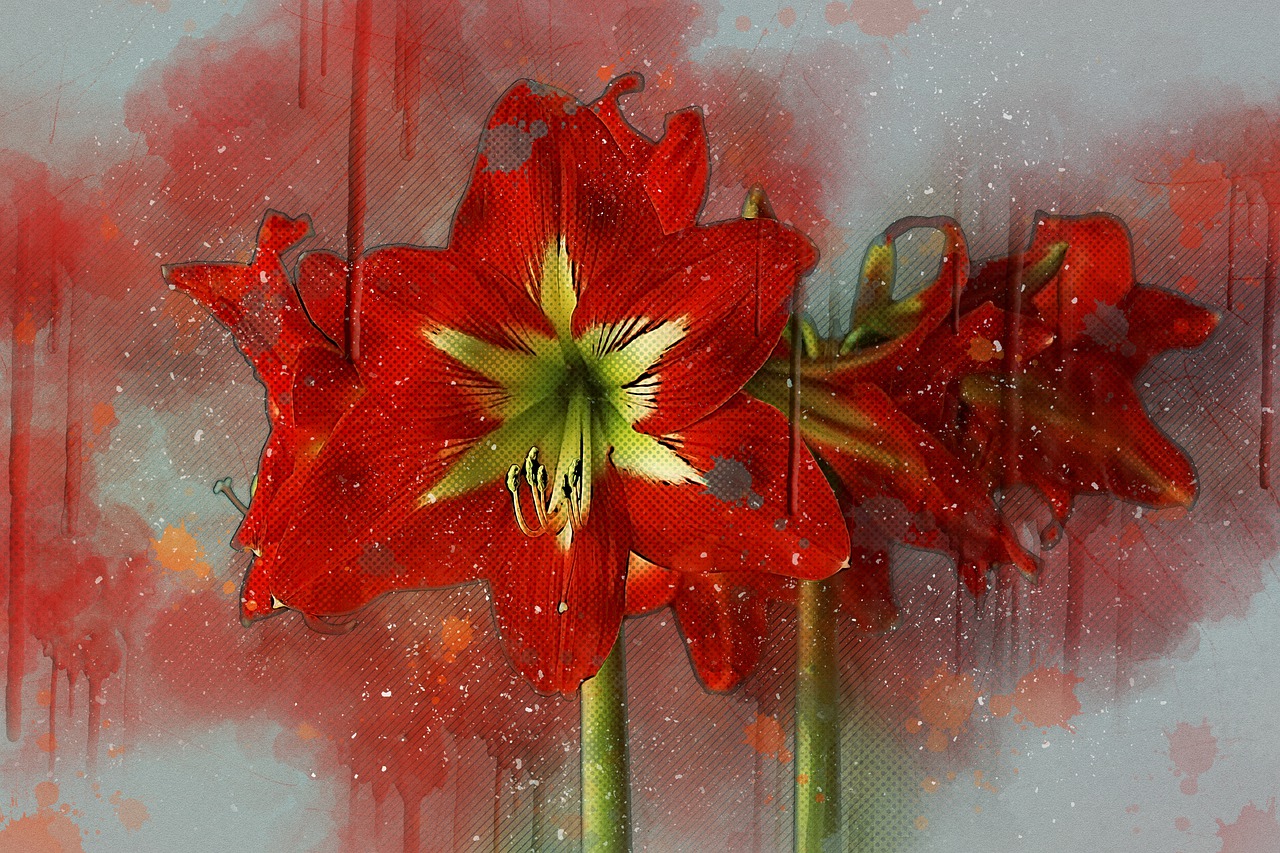Amaryllis, with its striking flowers and unique characteristics, has garnered immense admiration among gardeners and flower enthusiasts alike. Originating from the tropical regions of South America, this extraordinary plant is not only beautiful but also symbolic of joy and resilience.
On this page, we will examine the appearance of the Amaryllis, exploring its flowers, leaves, and various species while providing context on its growing conditions, care tips, and symbolic meanings.
Visual Characteristics of Amaryllis
Flowers

The most striking feature of the Amaryllis is undoubtedly its flowers, which are large, trumpet-shaped, and come in a variety of colors including red, pink, white, and orange. Here are some key characteristics to note:
Size: Amaryllis flowers can be quite large, often measuring up to 6 inches across. In healthy plants, each stem can produce multiple blooms, often referred to as “umbels.”
Shape: The flowers are typically funnel or trumpet-shaped, with six petals that may be curved or ruffled at the edges. Each bloom has a central, unique structure in the form of stamens and pistils that adds to its intricate beauty.
Colors: While many Amaryllis varieties boast solid colors, there are also bicolored and striped varieties. For example, ‘Royal Velvet’ has deep red blooms with contrasting white edges, whereas ‘Ferrari’ is a striking red variety with a slightly darker center.
Leaves

The leaves of the Amaryllis plant are long, strap-like, and glossy green. They serve as a significant contrast to the bold blooms. Key features of Amaryllis leaves include:
Shape: The leaves are typically elongated and flat, tapering to a point, giving them a lanceolate appearance. They grow in a rosette pattern at the base of the flower stalk.
Length: They can grow over 2 feet long and may reach widths of 1 to 2 inches, creating a lush backdrop to the stunning flowers.
Color: The rich green color enhances the vibrancy of the blooms and provides an appealing base, making the flowers appear even more luminous.
Stems

Amaryllis plants are known for their tall, sturdy flower stems, which can grow up to 2 feet high. Each stem, or scape, emerges from the bulb and is devoid of leaves, allowing the flowers to stand out prominently. The stems are often robust enough to support the large blossoms, and their height contributes to the plant’s visual impact.
Growing Conditions of Amaryllis

To fully appreciate the visual appeal of the Amaryllis, it is essential to understand the conditions under which this plant thrives. Amaryllis can be grown indoors or outdoors, and their care requirements can influence their appearance significantly.
Light Requirements
Amaryllis plants thrive in bright, indirect sunlight. When grown indoors, a south- or west-facing window is ideal as it provides the necessary light for optimal growth. Direct sunlight can scorch the leaves and flowers, so make sure to filter strong sunlight.
Soil and Watering
Using well-draining potting soil is crucial for Amaryllis, as they are prone to rot when their roots sit in water. Soil that contains peat moss, perlite, or sand works well. Watering should be done sparingly, especially before the plant begins to bloom. Once buds appear, increase watering frequency to keep the bulb hydrated without waterlogging it.
Temperature and Humidity
Amaryllis prefers temperatures between 60°F and 75°F (15°C to 24°C). They also thrive in moderate humidity, making them suitable for most household environments. During the growing season, watering should be increased to encourage growth, but be careful not to overwater, especially as the bulb prepares to enter dormancy after flowering.
Fertilization
Regular fertilization during the growing season can enhance flower quality and promote healthy foliage. A balanced, water-soluble fertilizer (like a 10-10-10 or 20-20-20) can be applied every 4-6 weeks during the active growing season. After the blooming period, it’s advisable to reduce fertilization as the plant enters its dormancy phase.
Seasonal Changes: Dormancy and Reflowering
One of the fascinating aspects of growing Amaryllis is its life cycle, which includes a period of dormancy. After flowering, the plant will begin to lose its leaves, and this is a natural part of its growth cycle. To ensure vibrant blooms in the following year, follow these steps:
Cutting Back: After the flowers have faded, cut the flower stalks back to the base of the plant. Leave the leaves alone during the summer, as they are needed to feed the bulb through photosynthesis.
Watering and Fertilizing: Gradually reduce watering as the leaves begin to yellow and die back. Once the foliage has completely died down, stop watering altogether and allow the bulb to rest for about 8-10 weeks. This dormancy is crucial for the bulb’s future growth.
Replanting: Once the dormancy period ends, you can repot the bulb in fresh soil if needed, or simply move it back into a more conducive environment with light. Begin watering again and fertilizing after new growth appears, often around late winter or early spring.
Landscape and Container Use
Indoor Planting
Amaryllis is a popular choice for indoor planting. They can be grown in decorative containers that allow their stunning flowers to be displayed prominently in homes. Their tall, elegant stems make them an excellent choice for tabletops, window sills, or as part of festive decor during the holiday season. For a striking indoor garden, consider arranging several bulbs in a variety of colors.
Outdoor Planting
In warmer regions (zones 8-10), Amaryllis bulbs can be planted directly in the ground. They do well in well-draining garden beds, often creating a dramatic focal point amid other perennials. Grouping different varieties can create an eye-catching display, especially in spring and early summer when many species come into bloom. The long, lush green leaves will continue to provide visual interest even when the flowers are not in season.
Companion Plants
Amaryllis can be paired with various other plants that complement their beauty. Low-growing ground covers or flowering annuals, such as petunias or pansies, can provide a lovely contrast to their height and bold flowers. Additionally, using ornamental grasses can enhance the overall aesthetic by adding texture and movement to the landscape.
Symbolism and Cultural Significance
Symbolism
Amaryllis has garnered a variety of symbolic meanings across different cultures. Most notably, these plants symbolize:
Beauty and Pride: The stunning appearance of the Amaryllis flower often represents personal pride and beauty. Its vibrant blooms inspire admiration and appreciation.
Determination and Resilience: Due to their ability to bloom even under harsh conditions or after periods of dormancy, Amaryllis flowers convey messages of resilience and determination. They serve as a reminder of the importance of strength and endurance in the face of challenges.
Joy and Festivity: Given that many people choose to gift or display Amaryllis during the holiday seasons, they are associated with joy and celebration. Their vibrant colors bring warmth and cheer during winter months.
Cultural References
In literature and history, Amaryllis has also made notable appearances. Poets such as Virgil and Ovid have referenced the flower, using it as a symbol of love and charm. The concept of Amaryllis has transcended gardens and literature into art and design, often representing beauty that transcends the ordinary.
Conclusion
In summary, Amaryllis is not only a captivating flower with striking visuals, but it also has much to offer in terms of symbolism, growing potential, and versatility in garden design. From its large, majestic flowers to its glossy green leaves and towering stems, each aspect contributes to its position as a favorite among many gardeners and floral enthusiasts. Whether you choose to cultivate them indoors or outdoors, understanding how to care for and appreciate this magnificent plant will enhance your gardening experience.
As we continue to seek beauty in our surroundings, Amaryllis stands as a reminder of the importance of nurturing resilience and expressing joy through nature. Whether gracing our homes or thriving in our gardens, these unforgettable flowers invite warmth and splendor into our lives.
If you’re considering adding Amaryllis to your collection, don’t hesitate to explore the vast options available, and enjoy the mesmerizing transformation as these remarkable flowers bring life and color into your home or garden.





